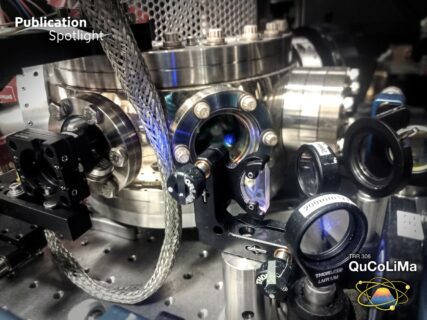Highly excited: Electrons in Rydberg ions
by Max Gmelch (SAOT)
As we may remember from school, an atom consists of a nucleus and a certain amount of electrons in the atomic shell. Similar to marbles running down the marble run or apples falling from trees, these electrons strive for lowering their potential energy. They accomplish that by occupying energy levels close to the nucleus.
However, by illuminating atoms with e.g. proper laser light, the electrons gain energy and reach higher energetic states at a greater distance. Atoms with such highly excited electrons are classified to be in so-called Rydberg states. These Rydberg atoms, or in other cases Rydberg ions, are very sensitive to the smallest change of electric and magnetic fields in their surroundings. Thus, they show enormous potential in the field of ultra-sensitive sensing on atomic scales.
The Quantenbit group of Ferdinand Schmidt-Kaler recently published on “Rydberg ions in coherent motional states: a new method for determining the polarizability of Rydberg ions”. By exciting trapped calcium ions, they were able to observe the dynamics of different Rydberg states. They further successfully linked their findings to theoretical calculations. Their methods and results will help in developing atomic sensors with unprecedented accuracy in the future.
Ferdinand Schmidt-Kaler’s group is located at the Johannes Gutenberg-Universität Mainz. The publication is part of QuCoLiMa Area B: Quantum cooperativity of collective degrees of freedom.


